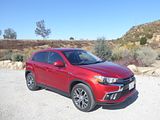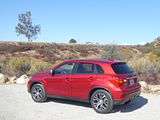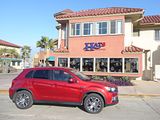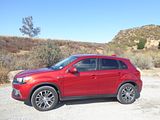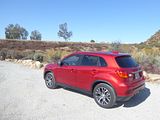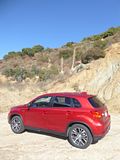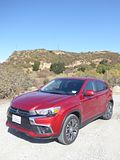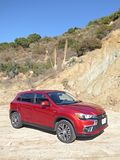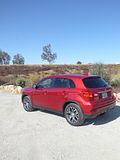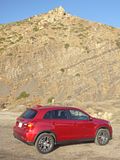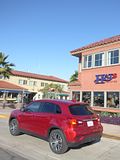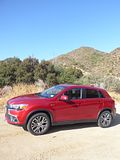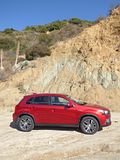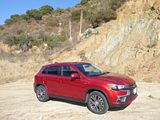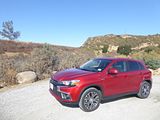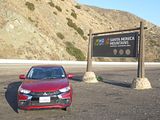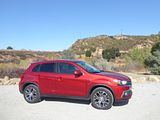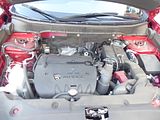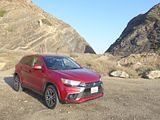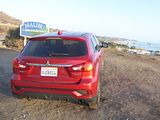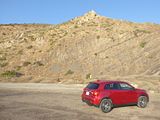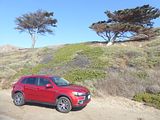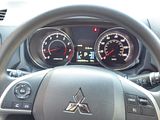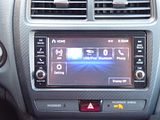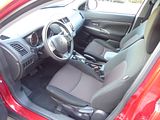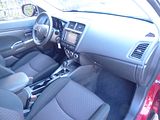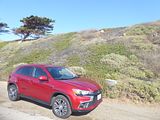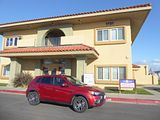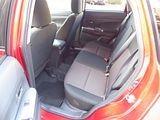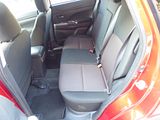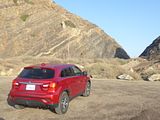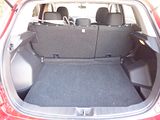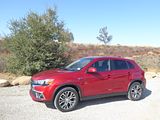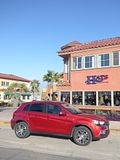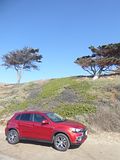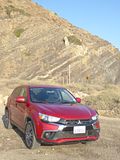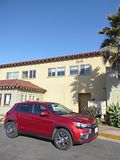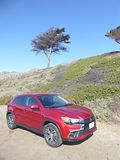Of all the words added to a car’s name by the creative folks in marketing, then “Sport” has to be the most mis-used. Time was when the Sport version of a car – and it was not a commonly used suffix – was just that. The Sport version generally had more power, and often other mechanical changes such as stiffened suspension, and bigger brakes as well as larger tyres, designed to make the car if not actually suitable for motor sport (which was the origin of the use of the term) then one which conveyed more of the impression of a car that could be so used. The Sport version had minority appeal, with the extra costs and trade-offs around comfort being too much for most buyers. But now, just about every manufacturer slaps the label on at least one version of each model they make, where often the only “Sport” involved is the spectacle of watching gullible customers pay a premium for a bit of marketing tinsel and a badge. There are countless examples of Sport badged cars which are anything but and they don’t even look the part in the way that the addition of alloy wheels, a spoiler and matt black trim gave you the visual clues as so many cars have these across the entire range. Sport has been given another use, seen more frequently in America, where it is applied to denote a smaller version of a cross-over vehicle, proving that the marketing department can’t be bothered to come up with a different name. Range Rover did it with a car which although visually similar to the non Sport car is a separate model. Hyundai did it with the last generation Santa Fe, where the 5 seater was the Sport compared to the full-on 7 seater and Nissan elected to call the US version of the Qashqai the Rogue Sport, even though the car is not based on the Rogue at all. And the subject of this test is another such example, the Mitsubishi Outlander Sport. In Europe it is known as the ASX, but in America, its maker chose to hijack the established Outlander branding, and of course they now have a problem as there is a car that sits in the range between the Sport and the regular model. But then logic does not apply in these situations, it would seem.
So, a Mitsubishi Outlander Sport it is. This is a car that seems to have been around for ever. And indeed, in product life-cycle terms, it has. It goes all the way back to 2010, an era when the crossover craze was very much in its infancy, with most manufacturers only offering one or two of them in a range still dominated by saloons and hatchbacks. Mitsubishi was no different. Staple offerings included the Colt hatchback (though not in America), the Lancer and Galant saloons and the car which had helped grow another sector, the Shogun (or Montero to the Americans and Pajero in many other world markets) SUV. The Outlander had been their first attempt at a crossover. The first one was a little gawky to look at, but the second one was better, the result of a joint venture with Peugeot/Citroen. The European market ASX was premiered at the 2010 Geneva Show as a slightly smaller version of the then current Outlander, with just five seats rather than seven, but sharing quite a lot under the skin.
I drove an ASX in the UK in September 2010, when the model had only been sale a few months. At the time, I was reasonably impressed, finding much that was commendable. But that was 2010. US market sales started soon thereafter, for the 2011 model year, and there have been only a few notable changes since that time, mostly cosmetic. For 2016, Mitsubishi added the SEL trim level and updated the interior and exterior styling, with a new front end design. The 2017 Outlander Sport received a new LE trim and standard automatic climate control. The 2018 Outlander Sport gained a standard touch screen and available Android Auto, Apple CarPlay, lane departure warning, automatic emergency braking, and forward collision warning. For 2019, Mitsubishi replaced the SEL trim with the GT trim and added more available safety features, including blind spot monitoring, rear cross traffic alert, and lane change assist and the same time, the power-adjustable driver’s seat and leather upholstery ceased to be offered even on the ritziest version. In essence, the Outlander Sport of 2019 is very similar indeed to the one you could buy in 2011. Many of the rivals have been through two full model generations in that time. So I was intrigued when I saw that a number of Outlander Sport models had entered the Hertz US fleet in the spring of 2019, the first Mitsubishi models to do so since the failed attempt to get anyone to like the utterly nasty Mirage supermini a few years ago. These proved instantly popular, vindicating the fact that the market does have an apparently insatiable desire for crossover vehicles, so it has taken several months and two trips later before I was able to secure one, to see what I make of what is now one of the longest-lived production models out there.
That UK test car had been powered by a diesel engine, but needless to say, this one runs on petrol. US market cars come with a choice of 2 litre or 2.4 litre 4 cylinder engines, and the test car, being an entry level model had the smaller unit which puts out 145 bhp. Standard is a 5 speed manual gearbox, but like all US rental cars, this one had the extra cost automatic transmission, which means a CVT gearbox. It proved pleasant but unremarkable to drive. Acceleration is modest, but sufficient to keep up with the stop/start nature of the traffic flows in the LA valley but when up in the canyons, the car did feel like it could usefully have had more power. The CVT gearbox was one of the better ones of its type, generally reacting well to the driver’s right foot and without the jerkiness that these transmissions sometimes generate. The trump card of the Outlander Sport was its economy. I covered 288 miles in the day that I had the car and it needed just 9.07 gallons to fill it up which computes to 31.75 mpg US or a very impressive 37.94 mpg Imperial. Everything else could be summed in the words “not noteworthy”. Noise levels are modest, the steering is pretty much on a par with what you get in many cars like this, which means light and a bit over-assisted, though that does make the car easy to manoeuvre. The handling is predictable and safe but not going to encourage you to find the twisty road home. The brakes did their job as you would expect and the ride, on 225/55 R18 wheels, was comfortable enough. It was easy enough to see out of this Mitsubishi and the rear-view camera certainly helped when backing into a parking space.
It is the interior of the Outlander Sport which reminds you most of all of its age. In one respect, this is a Good Thing, as there is a refreshing simplicity to the design, with no need for lots of buttons and complications which are pretty much de rigeur in all cars these days. But it is also a Bad Thing when you realise what small details are missing. The main dash moulding looks softer than it proves to be to the touch, but it is of a decent enough quality. There are inlays of various dark greys with subtly mottled texture which add a bit of variety, and much to my surprise, the centre console outer is wrapped in leather, complete with red stitching, the only bit of cow hide that features as you get a plastic moulded steering in this entry level ES spec. There is a simple instrument cluster under a cowled binnacle, with two traditional large dials for revs and speedometer, with small blue coloured bar charts for fuel level and water temperature set between them. There are various trip computer options which you cycle through by pressing a button to the left of the wheel, but a digital speed repeater is not one of them. Twin column stalks include the lights, with no auto feature here. Small buttons on the steering wheel spokes are for cruise and audio repeaters. Starting the Outlander Sport is with a conventional key in the slot and the associated chimes when you open the door with the key still inserted. The centre of the dash contains a 7″ touch screen which is used for the audio system and a few car settings, and nothing else. It has been upgraded to include HD radio now. A series of buttons on either side and below the unit are a bit fiddly to use, to change frequencies and wave bands. Lower down are three rotary dials for the automated climate control system. And that is pretty much it.
Seat adjustment is manual. The driver gets a height adjuster, whereas the passenger does not. Both do get height adjustable seat belts. The steering wheel telescopes in/out and up/down, so I was easily able to get the optimum driving position. The seats are trimmed in a sort of hard-wearing cloth, which had some red stitching in them to provide a bit of colour contrast. They proved quite comfortable, which I was able to test out, in the amount of time I spend sitting on them during the day of my test.
The Outlander Sport is in that size of vehicle that straddles rivals, being larger than the CX-3 and Chevrolet Trax, but not quite as big as the Toyota RAV4 and Hyundai Tucson, so it is not a surprise that space in the back looks a bit limited compared to the larger of those mentioned. With the front seat set well forward, there is ample leg room, but put it back, and things get a bit tight. Headroom will not be an issue, and there is pretty much a flat floor, with no significant protrusion of the centre console, so a middle seat occupant would not be challenged for knee and leg room. There is a drop down central armrest with the almost obligatory pair of cupholders set in the upper surface.
The boot is a good size. There was no load bay cover, but it is a regular shape, with small wells on either side of the main floor area, and plenty of depth The floor itself feels rather thin and covers what looked rather too large to be a space saver spare, though it bore markings to say that it was for temporary use only. There is no real space around it for any odds and ends. The rear seat backrests are asymmetrically split and simply drop down to give a flat load bay that is much longer, with room for a lot of luggage. Inside the cabin, there is a glovebox which is much smaller than you expect from the size of the lid, a small cubby under the central armrest, bins on the front doors and a recess in front of the gear lever. Those in the back do not fare well. There are no bins on the doors and there is a map pocket only on the rear of the driver’s seat.
The 2019 Outlander Sport is available in four trim levels: ES, LE, SE, and GT. The 2.0-litre engine is standard in all models except the GT. For an additional $1,500, you can add all-wheel drive to any model with a continuously variable automatic transmission (CVT), which is standard in every trim but the base ES. The ES trim starts at $20,945 and comes with a manual transmission, cloth upholstery, manually adjustable front seats, a rearview camera, and an infotainment system with a 7-inch touch screen, HD Radio, Bluetooth, four speakers, and a USB port. A CVT costs $1,200. Starting at $23,145, the LE trim adds Android Auto, Apple CarPlay, satellite radio, a leather-wrapped steering wheel, and heated front seats. The SE trim has a starting price of $23,545 and adds blind spot monitoring, lane change assist, and rear cross traffic alert. Top of the 2019 range is the Outlander Sport GT, which starts at $25,045 and comes with the 2.4-litre engine. It also adds lane departure warning, forward collision warning, automatic high beams, and rain-sensing wipers.
In purely objective terms, the Outlander Sport is not really a bad car. It goes as well as its rivals, has no driving characteristics which call for undue concern, it is spacious inside considering the external dimensions, and it is likely to prove painless to own, with a good reputation for reliability. Where it falls down is it simply feels, and inside, looks, old-fashioned. The entry level spec of the test car probably did not help, but things like the audio unit which is just that, with a screen enlarged only so the now mandated rear-view camera image can be projected constitute a reminder of how things were back in the day. Back in 2010, in fact. Mitsubishi sell most of their cars on value, having earned a reputation in the US for being able to do deals in what is sometimes called the “sub prime” sector, and so if the choice is between a brand new Outlander Sport or a used something else, I can see why some people might take the Mitsubishi. But actually, you could get a rival product that is several years old and still a technology generation newer than this, so that argument wears increasingly thin. The Outlander Sport has received another front-end facelift for 2020, suggesting that it will live on a while yet before a new version arrives. It’s going to be harder and harder to get people to buy them, and if you are at the rental car facility, I think these are the ones that will be left til the lot is depleted and there is nothing much left of this size, as whilst it is not a bad car per se, the honest truth is that there are plenty of better ones out there.


